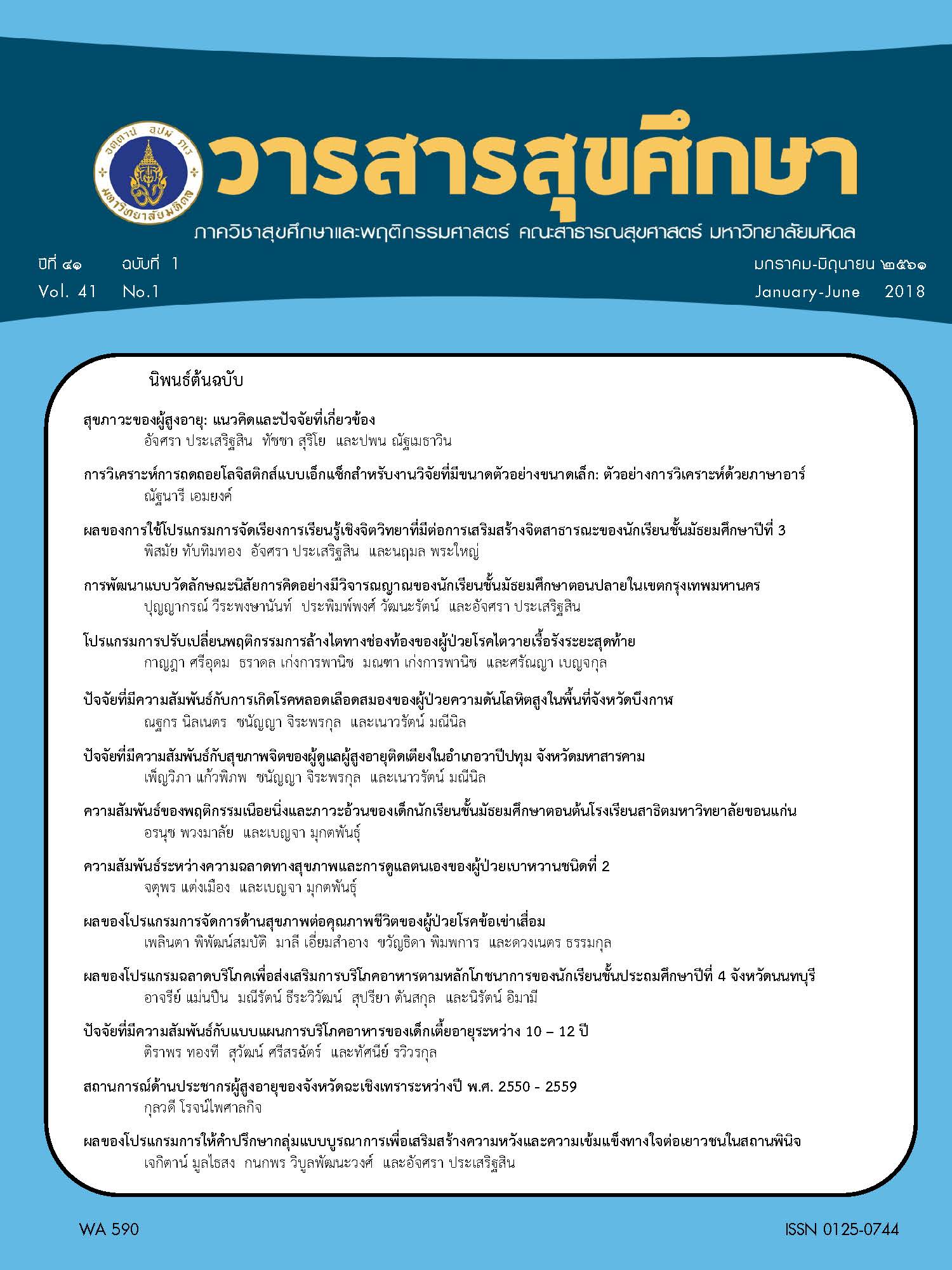A Development of Critical Thinking Disposition’s Scale for Senior High School Students in Bangkok
Main Article Content
Abstract
Objectives of this research is to develop a scale to assess the Critical Thinking’s Disposition for high school students in Bangkok. This research was Mixed Method Research, divide to 2 sessions. First, to define definition and number of factors of the Critical Thinking’s Disposition by review literature and in-depth interview with 5 experts in this field. The result is Critical Thinking’s Disposition have 7 factors. Then researcher creates items for the scale from these 7 factors. The scale is 60 item self-report on 5 rating scale, Index of Item-Objective Congruence (IOC) score is between 0.60-1.00 with 5 Experts and reliability is 0.93 with 44 students. Then take the adjusted measurement to collect data from 344 high school students in 4 Bangkok’s high Schools (usable 344). Select sample by 2 stage random sampling, first sampling each 2 school from 2 education areas, then sampling 2-3 classes per school for collecting data. After collecting data, researcher bring data to analyze with confirmatory factor analysis (CFA).
The result is measurement model of critical thinking’s disposition is acceptable fit with empirical data (x2/df=2.005, x2 p-value=0.0418, GFI=0.987, NFI=0.993, CFI=0.997, RMSEA=0.0541, RMR=0.00725), factor loading of factors is between 0.622-0.870. Sorting these 7 factors by high to low factor loading is Trust in Reasoning, Flexibility, Empathy, Fair-mindedness, Inquisitiveness, Persistence and Orderliness, and Independence. This measurement model has Construct Reliability at 0.886 and Average Variance Extracted at 0.530, these reflect that latent variable (the critical thinking’s disposition) have a good reliability and the 7 factors have good describe variance of latent variable (the critical thinking’s disposition).


